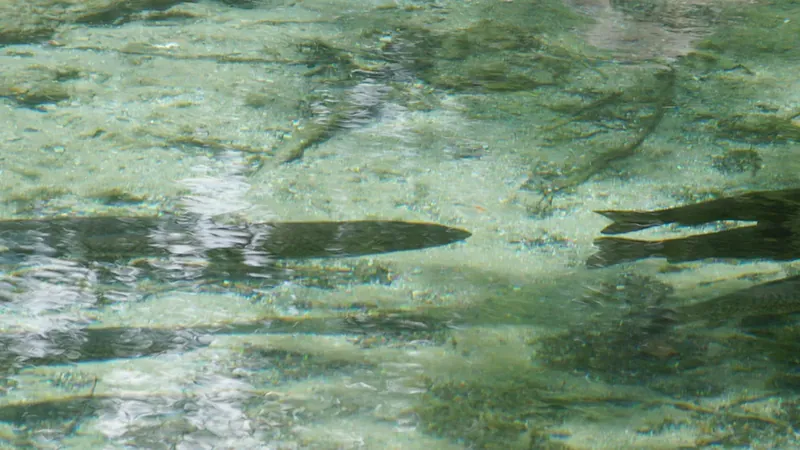
Oceanic Breakthrough: Scientists Capture Unprecedented Footage of Elusive Deep-Sea Shark
2025-08-24
Author: Wei
In a stunning revelation from the depths of the Caribbean, researchers have made history by capturing the elusive roughskin dogfish on film—an extraordinary move that sheds light on one of the ocean’s most secretive predators.
A Game-Changer for Deep-Sea Research
The groundbreaking sighting occurred near the Cayman Islands, where a dedicated team of scientists embarked on the first systematic exploration of deep-sea biodiversity. Using an underwater camera, they descended nearly 3,500 feet, strategically baiting the device with sardines to attract marine life.
Their patience paid off when the roughskin dogfish swam into view—appearing not once, but 54 times in just a few minutes! Stellar footage was captured, showcasing this typically "cryptic" species like never before.
First-Ever Record in the Cayman Islands
Published in the Journal of Fish Biology, the researchers hailed this as the 'first-ever record of the species' in the region. This significant documentation not only expands the known distribution of the roughskin dogfish, but also establishes a new locality record, crucial for future conservation efforts.
Why This Discovery Matters
Historically, roughskin dogfish have been relegated to bycatch, often inadvertently caught and destroyed by fishing operations. This excursion demonstrates that video technology offers an effective, non-invasive technique to monitor these elusive creatures—an essential step in understanding their biology and ecology.
Knowing where and how these species thrive is critical for conservationists, as it allows them to develop strategies aimed at protecting vulnerable marine populations. Without this knowledge, efforts to sustain biodiversity could falter, leaving many species at risk.
The Bigger Picture: Biodiversity's Role in Ecosystems
This discovery is part of a larger conversation about biodiversity and ecosystem health. The Royal Society underscores that diverse ecosystems are vital for sustaining life on Earth—including human survival. A rich array of species, from plants to microorganisms, is necessary to provide the clean air and food we depend on.
As this research sheds light on the hidden world beneath the waves, it paves the way for further studies and conservation efforts that are crucial to maintaining our planet's precious biodiversity.




 Brasil (PT)
Brasil (PT)
 Canada (EN)
Canada (EN)
 Chile (ES)
Chile (ES)
 Česko (CS)
Česko (CS)
 대한민국 (KO)
대한민국 (KO)
 España (ES)
España (ES)
 France (FR)
France (FR)
 Hong Kong (EN)
Hong Kong (EN)
 Italia (IT)
Italia (IT)
 日本 (JA)
日本 (JA)
 Magyarország (HU)
Magyarország (HU)
 Norge (NO)
Norge (NO)
 Polska (PL)
Polska (PL)
 Schweiz (DE)
Schweiz (DE)
 Singapore (EN)
Singapore (EN)
 Sverige (SV)
Sverige (SV)
 Suomi (FI)
Suomi (FI)
 Türkiye (TR)
Türkiye (TR)
 الإمارات العربية المتحدة (AR)
الإمارات العربية المتحدة (AR)